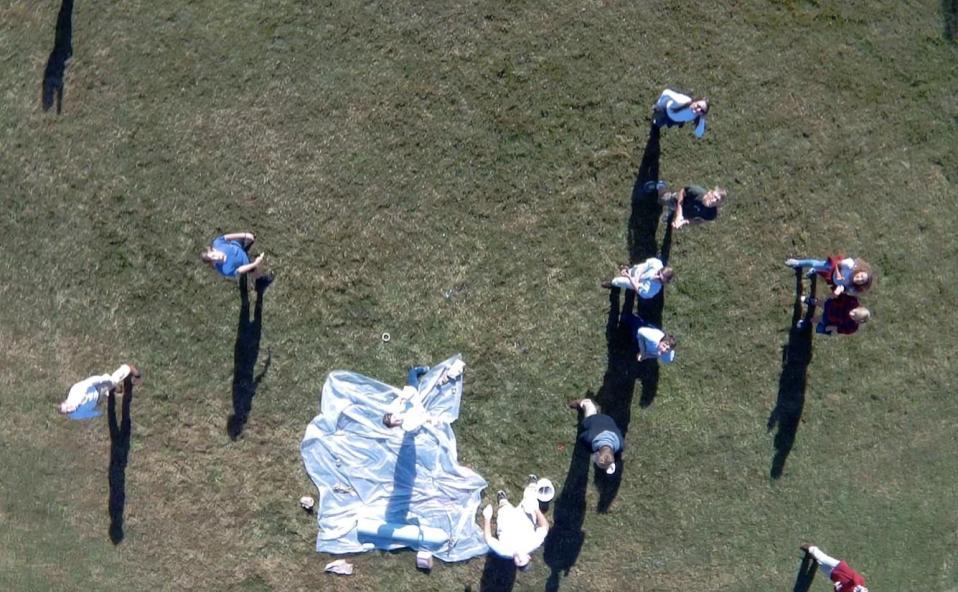On Friday, Oct. 20, the Gunston Science and Engineering Club launched our fifth mission to “near space”—the region above where aircraft fly, but below the orbits of satellites. The payload included cameras, tracking devices, and instrumentation to measure temperature and pressure. A weather balloon was used to carry the payload to the stratosphere. The balloon then burst as expected and the payload returned gently to Earth by parachute. The balloon was launched from the Gunston campus and landed near Laurel, DE a little more than 2 hours later.

Balloon looking down on launch team
The balloon reached an altitude of 19.44 miles, a record high altitude from past missions. The lowest pressure measured was less than 1% of the barometric pressure at the Earth’s surface. Preliminary results indicate that the science payload detected the tropopause with a temperature around -70 degrees Fahrenheit. The balloon was approximately 6 ft in diameter when launched and 20+ ft in diameter when it burst.
Dr. Mariah Goodall and Mr. Tom Chafey led two chase cars that beat the payload to its landing site, enabling them to observed the payload descending on its parachute—another Gunston first. Mr. Dale Wegner, father of Gunston alumni Jay Wegner, set up the tracking for the chase cars and several tracking stations for students who were not part of the chase.
The science and engineering club is led by Alli Webb ‘18 President, Jack Morrison ‘18 Vice President, and Garrett Rudolfs ‘18 Secretary. The Mission Commander for the balloon launch is Brynne Kneeland ‘19. In total, 21 students assisted in preparing the payload, launching the balloon, and recovering the balloon. They divided up into seven teams for different jobs: launch, payload, imaging, science, trajectory, tracking, and recovery. The club mentors are Dr. Ken Wilson and Dr. Mariah Goodall.



Write a Letter to the Editor on this Article
We encourage readers to offer their point of view on this article by submitting the following form. Editing is sometimes necessary and is done at the discretion of the editorial staff.